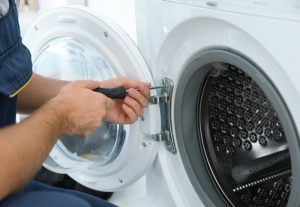What Does It Mean When A Microwave Gets Hot On The Outside?
Ever wondered why your microwave feels hot on the outside? Are you scared or concerned that it might be overheating?
Worry no more; you are at the right place for answers. Typically, electrical appliances are prone to their exterior surface heating after working for an extended period.
But, this heat is usually safe to touch and is more warm than hot. This article will explain in detail why a microwave gets hot on the outside.
There is the possibility of blockage in the microwave’s air vents, or the cooling fan is either not functioning correctly or not functioning at all. Having another electrical appliance near the microwave can also contribute to its being hot. The outside of a well-functioning microwave should not feel extremely hot. Visit a technician immediately if it does.
In this article, I will highlight and explain why a microwave can get hot on the outside.
I will also explain what causes external heat in a microwave, how to minimize it, and what to do whenever it overheats.
What Causes External Heat In a Microwave?

It is usual for any working microwave to generate some external heat after a prolonged period.
However, if this occurs even when the microwave is off or immediately when plugged in, it could be a sign of potential damage to the microwave.
External heat in a normally functioning microwave stems from the oven interior lamp and magnetron tube working for an extended period.
This external heat is normal and will not damage the microwave. The surface should not feel extremely hot when touched.
If it does, this can be a sign of overheating, and the microwave should get checked out by a technician immediately.
Although, there is usually a stamp sign in the form of a triangle, highlighted by the microwave’s manufacturers cautioning users about the external heat.
Aside from the interior lamp and magnetron tube, putting your microwave close to another external heat-generating electrical appliance can contribute to the external heat on a microwave.
The heat from the other electrical appliance can get absorbed by the microwave’s outer walls, which can make the microwave’s exterior even hotter.
The host of reasons that cause external heat in a microwave can include the following:
Heat Transfer From the Food Being Cooked
There is a tendency for some of the heat within the microwave’s interior enclosure to dissipate into the inner walls and then become absorbed by the exterior cabinet.
In this example, the heat absorbed by the outer walls is minor and should not cause the outer walls to become extremely hot.
Although this is subject to how long the food cooks in the microwave.
Heat From Magnetron Tube
The magnetron Tube in the microwave converts electrical energy (and magnetic currents) into cooking heat.
Naturally, the side of the outer walls that covers the magnetron will feel hot over time as the microwave works.
However, damage to the magnetron tube can cause the microwave to overheat. Usually, this is due to reflected heat energy inside the microwave.
It happens mainly when the microwave’s glass turntable is absent.
Heat From the Oven Interior Lamp
The Oven Interior Lamp lights the microwave while the food cooks. If the lamp is on for a long time, the outer walls surrounding it will absorb some of the heat from the lamp inside.
It will, in turn, make the outer walls feel hot. The heat from the lamp should not make the microwave feel extremely hot.
An underlying issue probably needs a technician’s attention if the microwave feels extremely hot.
The Kind of Food Cooked
Microwaving a meal like popcorn for an extended period can cause steam from inside the oven to dissipate into the outer walls.
Although, this is only the case for some microwaves. Newer models rarely have these issues.
In the case of a repair where necessary, below is a table that contains a list of good quality magnetron tubes you can purchase
| Magnetron Tube | Specifications | Price |
|---|---|---|
| OEM OM75P(31) ESG | Great quality magnetron tube manufactured by OEM Mania. | 70 US Dollars |
| Poweka Magnetron Compatible | Extremely compatible and highly efficient | 41 US Dollars |
| ERP 10QBP Magnetron | 60 Hz frequency and 700 watts energy consumption. | 51 US Dollars |
Here is another table containing a list of high-quality interior lamps, specifications, and prices.
| Interior Lamp | Specifications | Price |
|---|---|---|
| E17 light bulbs | Dimmable and non-dimmable variants, good quality. | 10 US Dollars |
| Whirlpool Microwave light bulb | Long life span, 40 watts power consumption. | 8 US Dollars |
Is It Normal For Microwaves To Get Hot on the Outside?
Yes, it is normal for a microwave’s outer body to get hot. However, if the outer body feels extremely hot when touched, it could be a sign of overheating.
Electrical appliances generate some heat while in progress for a long time. In microwaves, it is the magnetron tube that generates heat.
Usually, this will cause the outer wall section where the magnetron tube lies to feel hot when touched.
In addition, there is the threat of overheating if the magnetron tube or its cooling fan malfunctions.
The magnetron tube produces heat microwaves that reflect off the interior walls and subsequently build up heat inside the food enclosure.
If the fan that cools the magnetron as it generates heat gets damaged or malfunctions, it can cause the microwave to overheat.
It is essential to clean the microwave’s air vents regularly to avoid blockage or dirt buildup. Blockage or dirt buildup leads to poor airflow within the system, which causes overheating.
Can a Microwave Overheat?
Yes, a microwave can overheat. A microwave overheats for various reasons, such as:
A Faulty Fan
A faulty fan in your microwave can develop if you have either a clogged charcoal filter (for over-the-range microwaves) or a blockage in the grease filter.
The damage can also result from damage to the damper assembly in over-the-range microwaves.
If the fan motor of the microwave begins to malfunction, it can also affect the fan-free air flow through the exhaust system.
Either visit a technician when you notice your microwave has a faulty fan or, if you can, buy and replace the fan yourself.
Damage To the Magnetron Tube
This problem can result from damage to the magnet tube’s magnets, a burnt terminal, or loss of circuits’ connections.
If the magnets in the tube are under a lot of strain, they may crack and break.
When this happens, the microwave cannot maintain a balanced interior temperature anymore, which can lead to overheating.
What Should I Do When My Microwave Overheats?
Immediately unplug the microwave from its energy source once you notice it overheating. Doing this will cease any further damage to the microwave.
After unplugging the microwave, allow it to cool for about 15 minutes, plug it back and switch it on. If the microwave overheats again, quickly unplug it and take it to a good technician.
To prevent overheating from occurring again, follow these simple rules:
- Avoid leaving the microwave on for very long periods.
- Regularly clean the grease or dirt buildup in the vents to ensure proper ventilation.
- Clean the microwave thoroughly every week.
- Repair any malfunctioning part immediately after you notice a fault.
- Do not purchase used microwaves.
FAQs
What Can Cause a Microwave to Burn Out?
Always running an empty microwave can cause the magnetron to burn out. The burnout can also occur due to loose connections on the magnetron or a capacitor burn.
Should a Microwave Feel Hot on Top?
Yes, it is normal for the top of the microwave to feel hot after working.
Should You Feel the Air Coming Out From a Microwave?
Yes, it is normal to feel warm air coming out of the side and bottom vents of the microwave.
Why is Air Blowing Out of the Top of a Microwave?
Microwaves have air vents that ensure free airflow to avoid overheating.
You May Like To Read
- What Does It Mean When A Microwave Gets Hot On The Outside?
- 5 Reasons That Microwave Plates Break!
- This is How Hot A Microwave Gets!
- Do Microwaves Interfere With Bluetooth? (Read This First)
- This is Why Microwaves Take Longer With More Food in Them!
- Can You Use A Microwave Without The Waveguide Cover?



















